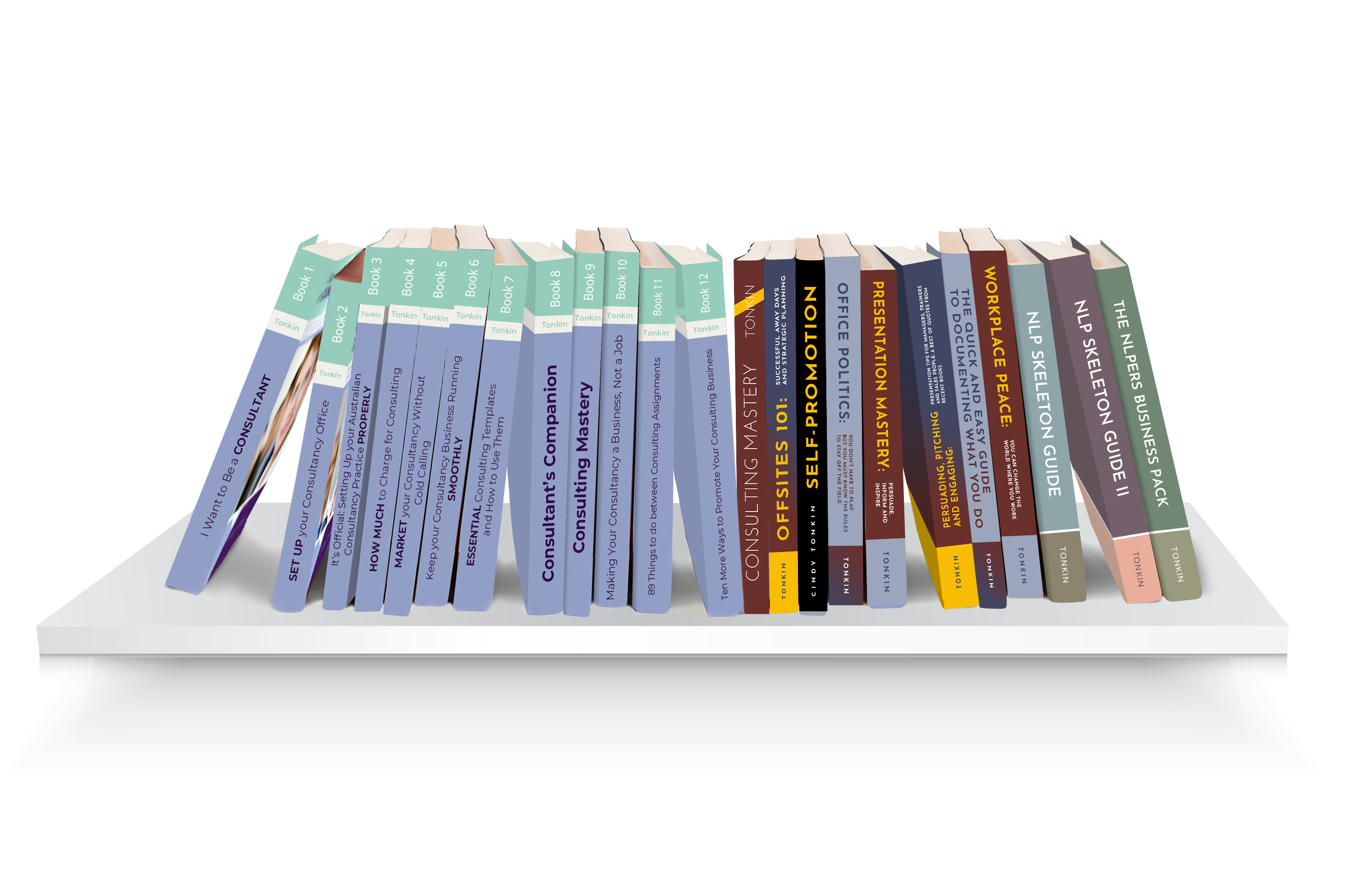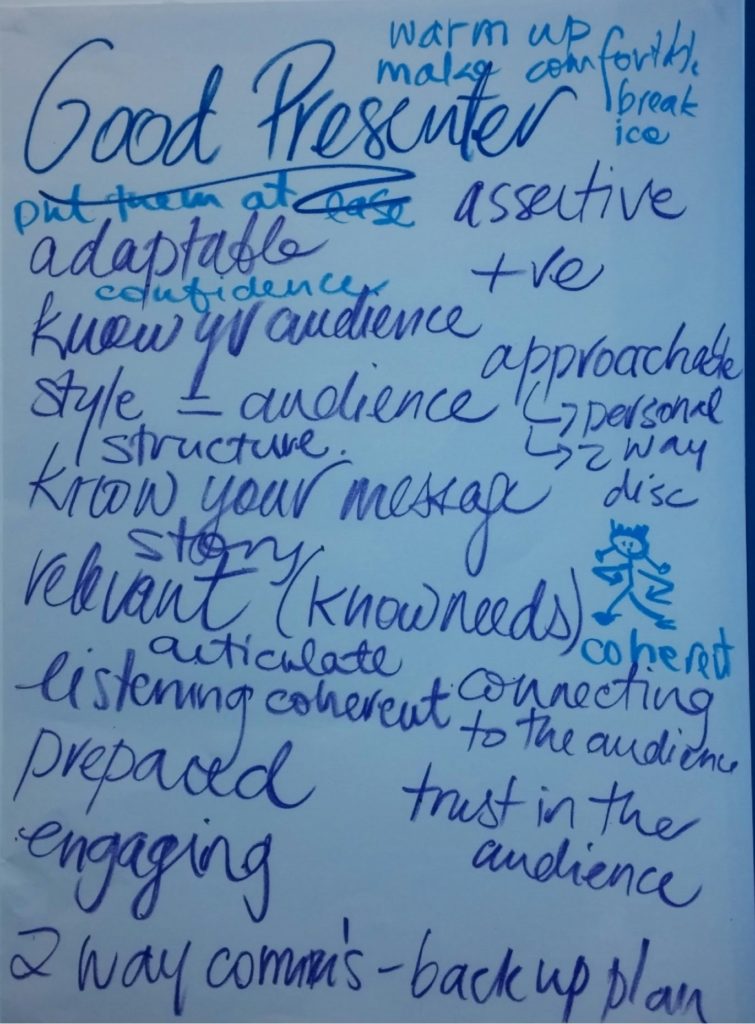
Peter Gebhardt and his teams analyse NSW Traffic data to improve the experience of the end user: the drivers on NSW Roads.
Peter’s career path, like many of my podcast guests, has passed from marketing to analytics, finance to public service. He talks about why changing industries is good. We get to hear about his experience of transitioning an analytics team to agile: it’s all about knowing where you’re going and helping others, protection and collaboration. It requires clarity of outcome, and a scrum master who protects the team from the onslaught of requests. Peter says much more than that.
It’s all about building analytics capability across your whole team. Here’s the transcript.

What Peter said…
Cindy Tonkin: 00:37 So my guest today is Peter Gebhardt.
Peter Gebhardt: 00:39 Thank you.
Cindy Tonkin: 00:39 His name may or may not mean something. We don’t know. I will find out. And if there is a meaning I will put it on the show notes.
Peter Gebhardt: 00:50 Okay.
Cindy Tonkin: 00:50 Essentially we want to talk about how we work smarter. You’ve seen the questions, but I’m happy to range wherever you want to range. First I want to know what podcasts you listen to, because you told me you listen to them.
Peter Gebhardt: 01:06 Yeah, absolutely.
Cindy Tonkin: 01:06 What podcasts do you listen to?
Peter Gebhardt: 01:11 Pretty much Joe Rogan. So, probably that’s my first introduction to it. One of my colleagues, he covers a whole range of guests and different topics and I got hooked pretty much. I was hooked from then.
Cindy Tonkin: 01:22 Ironically he was mentioned… I recorded a podcast this morning with Ingo Bentrott and he said exactly the same thing.
Peter Gebhardt: 01:28 Yeah, he’s out there.
Cindy Tonkin: 01:32 Do you know Ingo Bentrott?
Peter Gebhardt: 01:32 No.
Cindy Tonkin: 01:33 No. Teaches at UTS.
Peter Gebhardt: 01:34 Right. Okay.
Cindy Tonkin: 01:35 He was my podcast guest an hour ago. But obviously the two of you were on the same wavelength.
Peter Gebhardt: 01:48 Yeah. I think Joe Rogan is pretty big too. He’s got a… yeah.
Cindy Tonkin: 01:48 Okay. Maybe it’s Joe … Alright, cool. Okay. Could be just you.
Peter Gebhardt: 01:48 Could be.
Cindy Tonkin: 01:48 So he’s your favourite?
Peter Gebhardt: 01:50 Definitely, he is. Yeah. But like I tend to listen to some sports podcasts and a few other things, but I’m just going on the train to and from work. He covers so many different guests and a lot of, you know, there’s a lot of data scientists in there and scientists as well. There’s a whole range of people. So it’s pretty cool.
Cindy Tonkin: 02:02 Oh okay. Well I’ll have to write down Joe – actually I won’t write him down because it’s going in my show notes. I’m going to be like three hours listening to this and dissecting all the bits and pulling show notes … probably I’m the only person who reads it, but it’s really cool because it kind of makes me do research to go like, “Yeah, what does Gebhardt mean? Okay, that’s interesting. I’ll have a look at that.”
Cindy Tonkin: 02:21 “Oh, what does Joe Rogan cover?”
Cindy Tonkin: 02:24 Who are the data scientists who’ve been on his podcast?
Peter Gebhardt: 02:26 Absolutely.
Cindy Tonkin: 02:30 So tell me, Pete, let’s start at the top of the questions because you know it’s important to go sequentially. Actually, do the pre-question. What’s your history? Where have you come from to get to data scientist?
From analyst to marketer to business analyst to Agile Lead

Peter Gebhardt: 02:43 Yeah, so I started off as an analyst, pretty much like a lot of managers and lead analytics, so very early on in my career I did a lot of data science subjects at university so completed a degree in IT and did a major in marketing. So I basically wanted to combine the marketing aspect with analytics as well to help companies target customers. So started that off very early on and did that, and then I sort of got a bit bored and did the whole overseas experience. Went to the UK, did a whole bunch of consulting work. Started going into the business analysis side of things which is quite different. It was very sort of different problems. Came back and then really stuck back into the marketing side of things.
Peter Gebhardt: 03:23 So I was at Virgin Mobile for few years, then I went to CBA. I was in their customer decisioning and analytics thing for a few years. Now I’ve sort of gone into the government side of things which is a lot different. It’s more real fundamental problems with people getting from point A to point B. So it’s very different thinking.
Cindy Tonkin: 03:41 And transport and traffic which is a different kind of domain, really, compared to, say, finance.
Peter Gebhardt: 03:46 Yeah. Very different problems. So that’s been good. I think that’s been key for me really staying motivated in my role, is to sort of spread the problems that are here, you know.
Cindy Tonkin: 03:54 That leads to the second question which is: How do you work smarter, faster, nicer? What are your routines, your things that keep you excited and interested?
Peter Gebhardt: 04:05 Yeah, look, I think it’s important to look at different problems. So it is important to actually move around. So I find a lot of people particularly within the analytics realm can stay within one industry for a very, very, very long time. It’s very, very comfortable. So I think it’s really about getting out of your comfort zone and going to different roles. So that’s what I’ve found has really helped me just retaining that focus and really sort of getting more experience.
Cindy Tonkin: 04:31 And what about health routines? Are you a runner? Are you a …
Peter Gebhardt: 04:37 I probably don’t run as much as I should. I’ve got a three-year-old and a three-month-old so I’m probably two or three times …
Cindy Tonkin: 04:40 Just running around the house.
Peter Gebhardt: 04:40 I intend to again soon, but I used to play a lot of football, like soccer, when I was younger, so that was a big part of my life until … I was around 18, 19 used to play a lot of representative but stopped.
Cindy Tonkin: 04:54 And now you’re like 21 so …
Peter Gebhardt: 04:54 Oh, yeah, yeah, yeah, yeah. No, it’s just a few years later! But I try to swim whenever I can so I do a lot of swimming and my son’s learning to swim so that’s important, to try and stay as healthy as you can.
Cindy Tonkin: 05:04 So Ingo this morning was talking about he loves the Pomodoro technique, you know, it’s that time management thing where you turn the timer for 25 minutes. You have 25 minutes of focus and then you can have five minute break. Do you have one of those kinds of things?
Professional Development

Peter Gebhardt: 05:19 No I’m reading a book at the moment on Covey’s Seven Habits of Highly Effective People–
Cindy Tonkin: 05:22 I love Stephen Covey.
Peter Gebhardt: 05:25 It’s an awesome book. So I think I quite like the fact … and I tend to do this, sort of plan my week, so highlight the big important things, you put them
Cindy Tonkin: 05:31 The big rocks in.
Peter Gebhardt: 05:32 Exactly. And they need to be pretty flexible because I find I don’t work very well with really highly structured times.
Cindy Tonkin: 05:38 No, I feel boxed in.
Peter Gebhardt: 05:40 I’m really, really bad and I just feel horrible when things don’t work out. So I sort of highlight the big important things for the week. I try to put in particular days and then I put that in the diary and I try to sort of work that way. Because I find it just becomes too rigid and I get sort of stressed and I don’t get anything done.
Working with Agile

Cindy Tonkin: 05:55 Because you’re working with Agile aren’t you? How’s that? Now, I get lots of people who don’t want to get into Agile, asking me: “But is anybody really using it analytics?” What was the transition like for you, to move from non-Agile to Agile.
Peter Gebhardt: 06:13 It was quite confronting actually. Because it was at CBA, CBA’s been doing Agile analytics for about seven or eight years. So initially, when it came on, I think I was just moving into the management space, and I was quite sceptical. I thought, “Oh here we go, here’s a way to micromanage and everyone has to put their task on a board, everyone talks.”
Peter Gebhardt: 06:28 I felt like, this isn’t going to end well. I’m backed into a corner. Gut I think it does really well! It sort of replicates a really tight team. It really forces the conversation at the beginning of the day. If you want a team that tends to help each other a lot, says, “You okay, do you want some help? These are the challenges I’m having right now” You have a clear set of tasks or objectives of what you’re trying to accomplish in two weeks or four weeks, whatever the cycle is. So people sort of have a sense of where they’re going and they have a place every morning where they get up and they say, “I need some help.”
Cindy Tonkin: 06:58 I can’t see anything wrong with that. I think that sounds fabulous.
Peter Gebhardt: 07:05 It does. And it really … I think it’s the beginning of the sprint-cycle, you really cut down what you think you can get through. It adds that lens of, “Is this really realistic” rather than sort of just working 12 hours a day. It really needs that lens. So there’s a lot of protection with the team but there’s a lot of collaboration. So I think it does that really well. I think there’s a lot of partners out there that say you have to do this, you have this and it has to be structured in a very specific way. I find you make Agile work, and you mould it in the way that works well for your team. But effectively it makes people communicate and seek help very quickly.
Cindy Tonkin: 07:40 And that’s wonderful. And it makes them accountable without making them feel like they’re being micromanaged.
Just checking: it doesn’t feel like micromanaging?
Peter Gebhardt: 07:45 Not at all! Because, everyone in the morning says, “This is what I’m working on, this is what accomplished yesterday, this is what I’m going to do today, and this is what I’m stuck on.” So I think it forces introverts, they find it quite uncomfortable in the beginning.
Cindy Tonkin: 07:57 Initially yeah
Peter Gebhardt: 07:58 Because the teams could be anything from a few people to ten people and it can be quite confronting.
Cindy Tonkin: 07:59 Yeah for some people talking in front of 10 people is really hard-
Peter Gebhardt: 07:59 Is terrifying yeah. But look, I think if anything, it does that very well. So if you have a really tight team communicating really well, helping each other all the time, they want to not see anyone else fail and really want to achieve something really quickly and get it out there. I think that’s what it does.
Cindy Tonkin: 08:22 Tick, tick, tick, tick tick. Yeah, yeah, wow. So you wouldn’t go back.
Peter Gebhardt: 08:28 No, I think it’s very pragmatic, because at the beginning of each cycle you have someone that says this is really what I want to see.
Cindy Tonkin: 08:36 Because they have to be clear on their outcomes as much as analysts have to be.
Peter Gebhardt: 08:43 In the beginning yeah.
Cindy Tonkin: 08:44 Because that’s one of the big things that as I’m interviewing people and asking what makes a good analyst, almost all of them say, “You’ve got to be able to ask the questions to get the context, you’ve got to be curious.” Agile’s going to force you to be curious at the right time and keep you on track.
As a manager within an Agile context, what’s different?
Peter Gebhardt: 08:59 They tend to, look, they put managers within the ScrumMaster role quite often, so the ScrumMaster is kind of a funny name, but they’re intended to protect the team. So you’ll have the business having this flood of information always asking, “Can I get this? Can I get this bit of data? Can you give me this?” It’s really their job to protect the guys from all these external forces coming in and say no this is the objective, we just want to get this stuff done. We just want to get this stuff done. That’s not to say that things don’t change, because priorities can change, so you really have that product down to one person who’s sponsoring the whole thing.
Cindy Tonkin: 09:28 Who says, “I’m the in charge here.”
Peter Gebhardt: 09:30 Exactly. Things can change, that’s okay as well, that’s the other thing. I mean you might be working on something and a day later someone’s released something that’s very very similar. Let’s stop and go back to the drawing board. And that’s okay as well.
Cindy Tonkin: 09:40 So that iterative approach of it can change day to day which is why you have daily meetings.
Peter Gebhardt: 09:44 Absolutely, yeah.
Cindy Tonkin: 09:45 And they’re not long?
Peter Gebhardt: 09:48 No, in the morning they’re 15 minutes. So I think, to counter that risk, you tend to have it just for a couple of weeks of sprint cycle. So even if you work on something which someone already has, it’s worth throwing away, it’s going to be two weeks lost so…
Cindy Tonkin: 09:59 At the end of two weeks you go, “We’re not going to pursue this any further.”
Peter Gebhardt: 10:05 Exactly, you know that’s important, because you could be working on something for six months, get it out and think, “we don’t really need this.”
Cindy Tonkin: 10:06 That was a big waste of time. Yeah exactly, nice. Excellent. Well that’s good. Because people keep asking me, “Why Agile?” Now I’ve got you on podcasts. I just say listen to the podcast, Peter’s going to tell you all the things he loves about Agile and why it works. And it’s not like oh it’s analytics it can’t be done. It’s actually, it’s still a project based approach, what’s the outcome you want, how can I deliver it.
Peter Gebhardt: 10:32 I think what often happens is Agile was started out as software development, so it had a real clear objective in trying to build this App with this feature get it out there. With analytics, it’s quite creative. You don’t always know, you need to seek the problem-
Cindy Tonkin: 10:47 What it’s going to be?
Peter Gebhardt: 10:48 You need to ask from the business, “What’s your problem fundamentally? What are you struggling with?”
You need to try to interpret that in a way in which data can help them make a decision. And then break that apart and say what can I deliver in 10 days. And then go and do it.
So those things are quite hard, and I think it is a challenge in sort of way of working to push into analytics. But it’s certainly possible. I think if you’re having those conversations upfront with the business and the product owner and really understanding them, and that’s the key thing, I think it’s very possible. But I think if you don’t have that engagement, you’re really confident in going out and saying, “We want to help you”. I think if you don’t do that and you just sort of try to do your own analysis and get it out there, that’s where it fails.
Cindy Tonkin: 11:25 Yeah, yeah. So it requires a different mindset on the part of everybody, not just on the analyst’s part or the manager’s part.
Peter Gebhardt: 11:30 Totally, oh totally. It’s a big fundamental shift for the analyst. But it’s also for the business and the way they work.
Cindy Tonkin: 11:37 So what’s the outcome? Once you’ve done that, once you’ve set it in, what are the differences you’re seeing? What are the gorgeous things about it?
Peter Gebhardt: 11:43 I think, well I’m working pretty closely with regional and freight, so that’s everything outside of Sydney, so you think, “Oh there’s not traffic problems out there at all, what are you talking about?” So I think one of the biggest things, when I first came to RMS around 11 months ago was we want to understand the performance of the roads. So give me performance data on all the major routes outside of Sydney. Let me know which are struggling, which isn’t struggling, and explain reasons why.
Cindy Tonkin: 12:04 Oh that’s a huge amount of data to collect.
Peter Gebhardt: 12:08 It is, but you know what, it’s also “performance”, what on earth does that mean?
Cindy Tonkin: 12:12 Yeah! How is the road performing? I don’t know it’s black.
Peter Gebhardt: 12:15 So we went out to the business and asked them, “What do you think?” And got a whole raft of different responses-
Cindy Tonkin: 12:20 Of course you did.
Peter Gebhardt: 12:21 It doesn’t always work when you go out there and say well, “How do you want to answer this?” And sometimes, you just have to have a stat and say, “This is what I think is the best way to measure performance.” We compared it to people travelling at the speed limit, tallied them up and gave them a score. And pretty much gave red, amber and green rating based on the best performance to the least, and said, “Here you go this is what we think.”
Peter Gebhardt: 12:40 We get all kinds of reactions when you get it back. But I think, that was our first iteration. Just getting it out there, creating sort of static pdf, it was nothing no dashboard flashy, what do you guys think? And of course first reaction is like, “What on earth is this?” But that’s good.
Cindy Tonkin: 12:53 Because at least that’s now something to respond to. So part of it is you’re kind of setting problems for them to respond to that gives them an idea to go, “Well that wasn’t what I meant.”
Peter Gebhardt: 13:03 Absolutely.
Cindy Tonkin: 13:05 It’s like when I send my designer something and I go, look, what I want is something that feels a bit like this and has a look like this but you know, and they give me two things and I go, “Oh, first one’s terrible.” But second one’s closer to what I want. But, “Can you make that more-“
Peter Gebhardt: 13:12 Absolutely, that’s all it is.
Cindy Tonkin: 13:13 And I don’t know until I see what they’ve given me and I go, “Well it wasn’t that, but it was kind of like that.”
Peter Gebhardt: 13:28 And it’s just a process. You don’t often know. I think with analytics I’ve said it before, it’s kind of creative, and it is. You don’t even know sometimes what to look for, but you’ve got to get something out and get the feedback. And sometimes that’s the best way to actually just start the conversation. That’s progress, we started from just a PDF to building insights packs to now we’re building dashboards for them to actually go and in real time they can see what’s going on. So we’re just sort of building on from there.
Cindy Tonkin: 13:46 Nice
Peter Gebhardt: 13:47 So I think, yeah I think it can work. I can see why people think within analytics it doesn’t always work, but I think it can. I think you just need to engage and get those relationships-
Cindy Tonkin: 13:57 A lot has changed in terms of relationships.
Peter Gebhardt: 14:00 Absolutely, I think that’s the biggest thing.
Cindy Tonkin: 14:04 And for RMS, because we’ve had David Scott on, so I think he talks about in the podcast, I’m pretty sure that’s where he told me about it. Just bringing everything into one place to have the analysts have access to all of the data was in itself a major deal. So-
Peter Gebhardt: 14:21 It is a major deal
Cindy Tonkin: 14:22 You’re transforming that organization data-wise.
Peter Gebhardt: 14:24 I think, a lot of places, I don’t want to stereotype and say government, but there are a lot of disparate data sources everywhere.
Cindy Tonkin: 14:33 Yeah because everyone wants to their own. That’s mine! Don’t touch it!
Peter Gebhardt: 14:35 Yeah, and that’s hard. You sometimes face that. But I think bring those people around to see the benefit of what you’re doing. We’re trying to have one ecosystem and say well it’s not about ours, we’re actually here to help you as well. So it’s really about trying to bring people on the journey as well. And it’s trying to change that mindset of saying, I’m not taking your data and I’m not taking your role. I’m actually trying to help you.
Cindy Tonkin: 14:53 I’m looking after it. I’m tending it. I’m going to water your data everyday, it’ll grow.
Peter Gebhardt: 15:00 Absolutely. And I think that’s challenging, because not everyone has the same view.
Cindy Tonkin: 15:04 But the beauty of having it in one place is that they can still access it. It’s not like you’re taking it away-
Peter Gebhardt: 15:08 Not taking it away, no way.
Cindy Tonkin: 15:09 It’s still there!
Peter Gebhardt: 15:10 I think they call it democratizing the data sometimes.
Cindy Tonkin: 15:12 Oh democratizing the data! Well it also means you can cross-fertilize it with other data and… data makes data.
Peter Gebhardt: 15:21 Yeah absolutely, yeah.
Delegating and developing leaders

Cindy Tonkin: 15:21 And take over the world. Hang on what, I didn’t say that. So talk to me about lessons you’ve learned over the years. Are there any you know like, “I wish I’d known this.”
Peter Gebhardt: 15:35 Look I think, on the personal side of things, and really it relates to work as well. I think if you’re putting something off, you know when you’re putting something off whether it’s getting an exercise in or whether you’re in business and it’s I really need to talk to this person. Trying to bring them on the journey. If you find yourself focusing on things I just want to get this done, it’s your subconscious screaming at you saying you need to deal with this. I think that was the big thing that we I was just really learning to just have hard conversations and just go ahead and do it. I think that was really, really hard.
Cindy Tonkin: 16:03 In improv scenes we call it “shoot the grandma”. If you know grandma’s got to get shot, don’t put it off. Shoot the fucking grandma.
Peter Gebhardt: 16:09 I haven’t heard that one.
Cindy Tonkin: 16:09 Move on, get to the next bit.
Peter Gebhardt: 16:13 Totally. But I think that’s been a big one. I think the other thing is just delegation. Because I think when you have that job in analytic communities you tend to see analysts sort of rise up and get into those management leadership roles. I think for me, because I came from that background I thought well I can offer you know help to the analysts within the scrums: try this method, this method.
In reality it’s more and more I’m off the tools. I’m getting really rusty, I can’t really understand exactly the problems they’re working on. All I can do is offer them a bit of advice in just dealing with stress and stuff like that. So it’s being okay with the fact that you aren’t on top of the tools anymore and you don’t really know-
Cindy Tonkin: 16:51 That’s a really hard transition. Every single career.
Peter Gebhardt: 16:53 Well you question yourself, am I offering value here? But you are, but it’s just in very different ways.
Cindy Tonkin: 17:00 And that’s hard. How long has it taken you to make that transition.
Peter Gebhardt: 17:08 Oh it’s been a few years. So I think, because I tried to stay on the tools, tried to get technical. You know I’ll jump in here if you can’t do this, I’m going to help you. But I’m not helping them.
I’m not helping them learn how to cope with things or take on those leadership roles if they want to or go and have those hard conversations.
I think you need to give them the opportunity to resolve things themselves. So I think, kind of in a way, it feels like you’re taking a step back as well. You’re doing less and less for them, but I think it’s really important to help them grow.
Cindy Tonkin: 17:32 It’s a tricky thing. Any the other lessons learned?
Peter Gebhardt: 17:36 I think learning to delegate as well. I hate the word, like I said, it’s similar to the last one. You can’t do everything. Even with big strategic pieces like trying to bring in new data sources, trying to move into the predictive space.
Cindy Tonkin: 17:44 Because you’ve got 50 analysts over there, haven’t you?
Peter Gebhardt: 17:49 Yeah, within all the scrum things it’s around 50. In my team it’s around seven or so. Not too many.
Cindy Tonkin: 17:54 Even that, that’s a lot. You couldn’t do all that for them.
Peter Gebhardt: 17:57 No, absolutely not. And, look, there’s things, longer term strategic things which I sort of get involved in. We’re trying to get into the predictive space a lot more. We’re still trying to keep the wheels moving in terms of the actual what happened and why did that happen in terms of performance but I can’t really be across all those things.
So I say, look, can you please take the lead on this, I can’t go these meetings, or I can’t go to these steering groups, can you go in my place?
Cindy Tonkin: 18:23 And that’s great delegation. Because delegation’s also about forming them. If you were to move to Thailand because you won a lottery tomorrow, you’d want to have someone on the team able to step up and take that. And they can’t do that if you’re the one who’s always done it.
Peter Gebhardt: 18:38 No, well a lot of people determine that as success. If someone can take my job, or if I make myself redundant, then that’s a great thing.
Cindy Tonkin: 18:41 Yeah, totally! Exactly.
Peter Gebhardt: 18:46 People look at me funny when I say that, but I think if you can walk away and it’ll keep moving, then you’ve done your job.
Cindy Tonkin: 18:50 Yeah exactly, and that’s … the highest accolades can be, “we didn’t need him.”
Peter Gebhardt: 18:56 Yeah, absolutely.
Cindy Tonkin: 18:57 In a weird way.
Peter Gebhardt: 18:57 I know
Cindy Tonkin: 18:59 We wanted him to be there, but we just really didn’t need him. So we made him redundant and now he runs the organization.
What about this: what makes a better or worst data-analyst in your experience?
Peter Gebhardt: 19:11 Yeah look, the biggest thing is, I think, telling a story. I think that’s a real, it’s a bit struggle to actually find people who can do this because the data space is exploding, you have data scientists learning new languages and learning how to deal with new cool things with data, new visualization tools. The number of tools and languages available to people is just enormous. It’s getting bigger and bigger.
Peter Gebhardt: 19:33 I think that’s great that a lot of analysts and data scientists are going down that path but the biggest gap, and I think it’s really important, is connecting with the business and telling a story with your data. It’s not just being able to present, it’s really trying to influence people to say, this is happening. Like I mentioned before, when we first started with performance metrics, well we think this is what you should use and why. And really explaining your case. And I think it’s more of a softer skill, it’s not the technical side. It’s really how do I help with business with this data. How do I influence them and help them out.
Cindy Tonkin: 20:07 And how rare is it to find that, or do you have to form it?
Peter Gebhardt: 20:11 I think you have to form it. I think people are naturally either one way or the other. I think we, what we do at the Agile space is we have this thing called showcases at the end of the month. Get a whole bunch of people and say look invite all your stakeholders, bring them along. And each of the team get up in front of all these people and they talk about what they did. And I think that-
Cindy Tonkin: 20:27 Wow, even your little introverted ones who really don’t want to speak in public?
Peter Gebhardt: 20:33 Well, that’s the thing. And it’s really good, because everyone’s terrified. That it’s really great when you see them gain confidence and doing more and more of that.
Cindy Tonkin: 20:43 And realize it’s okay.
Peter Gebhardt: 20:46 Absolutely. I think that helps them. That creating those sort of environments where they have that practice. And that’s all it is, just practice. You just have to keep doing it. But I think it is really a fundamental skill, and I think it’s lacking a little bit out there just broadly, but I think it’s really important.
Cindy Tonkin: 20:59 And is that because you learn it by exposure to business?
Peter Gebhardt: 21:03 I think yeah you do. So I think when you first come in. Traditionally you sort of say, here’s a problem, here’s what I want you to build as a dashboard, you give them a whole bunch of requirements and then someone else takes away and presents it to the business, say this is great isn’t it. That doesn’t work, because it’s passing too many hands, we want them to be sort of a trusted advisor. So I think they only learn that on the job. Traditionally not their skill set. So they’re learning that on the job.
Cindy Tonkin: 21:32 So, I had Glen Bell on a couple of weeks ago and he was talking about this place called the Data School. Where it’s kind of almost like an apprenticeship in concept, in that you learn stuff, and it includes present this, present this, present this, present this, present this, tell a story. So that’s not a traditional university. In your experience, are people coming out of university even aware of the stuff, like are new people coming through or not yet?
Peter Gebhardt: 22:01 I don’t see it yet. I think maybe it’s just the people I’ve interviewed, because it’s one extra skill-
Cindy Tonkin: 22:06 Well the well is small and it depends who applies and all that stuff.
Peter Gebhardt: 22:10 I think it will change, because I think you can do a whole lot more with the tools which you could have done 10 years ago. So I think there’s a need to do that more and more. So I think you’ll see change. But right now it’s really hard to find people that can really uncover the analysis, uncover what the story is and then go and present that and say this is what’s happening. I think that’s really hard.
Cindy Tonkin: 22:29 And your guys are getting better at it.
Peter Gebhardt: 22:30 They’re getting very good. They are a lot better than me.
Cindy Tonkin: 22:34 Talk to me about recruiting. How do you recruit. What kinds of questions do you ask. What kinds of things are you looking for in the room?
Peter Gebhardt: 22:40 Look, it’s less the technical, I think most people, analysts, know how to code, they know how a database is structured.
Cindy Tonkin: 22:46 And if not you’ll find out pretty quickly.
Peter Gebhardt: 22:49 You will! You’ll find out straight away. But I think, it’s like I was mentioning before. I think it’s evidence of a bit of courage where they in previous roles have-
Cindy Tonkin: 22:56 How do you ask that question?
Peter Gebhardt: 22:58 Well I’ve got to say, is there something that you’ve implemented, is there a change or is there a piece of analysis which you’ve implemented which the business disagreed with-
Cindy Tonkin: 23:07 Oh okay cool.
Peter Gebhardt: 23:08 And you went ahead anyway and presented it. You don’t get a lot of good responses, because it is quite a tough thing to do. Because you’ll have opposition out there, when you actually start to present pieces of analysis. But it’s really that, finding that courage. People have said I know this is going to be inflammatory, I know people aren’t going to agree but I’m going to go see what the response is.
Cindy Tonkin: 23:32 Right. It’s a fine line isn’t it between, “I’m just the kind of bastard who ignores what anybody says and just does it anyway” and “I’ve got courage and I know I’m right but I’m a nice person.” That must be a fine line.
Peter Gebhardt: 23:50 And it’s finding the emotional maturity to be challenged and be okay with that. Because I think that’s the other thing I find.
If you have teams of analysts, if they’re not disagreeing with each other in a nice way, trying to say look I think what you’re doing is wrong, there’s a problem. Because confirmation bias we all agree with this thing, let’s just find everything that proves this thing. And I think if you don’t have a culture where analysts are saying well hang on I don’t agree with that, that’s a problem.
Cindy Tonkin: 24:15 But you’re not actually discussing the problem, you’re just fulfilling orders then.
Peter Gebhardt: 24:21 Exactly. So I think, a bit of courage, a bit of evidence of where they upset people and just really-
Cindy Tonkin: 24:26 I’d be interested in asking the question: “And how did you make it good again?”
Peter Gebhardt: 24:30 Yeah.
Cindy Tonkin: 24:30 That’s the thing. Not that you upset the client, but that then later you can recoup that and have the client still want to work with you. I think that’s tricky.
Peter Gebhardt: 24:39 It is a hard skill. Because you don’t want to go in there guns blazing. But I think it’s softly approach. And we found that, for example, when coming up with these performance reports for regional, they’d never seen anything like that before, there was a big focus on safety. This was more on the customer experience. How are people feeling driving? This is how we think they’re feeling.
Cindy Tonkin: 24:57 Yeah, they’re feeling at least confident enough to drive at the speed limit.
Peter Gebhardt: 24:58 Yeah, exactly.
Cindy Tonkin: 24:58 Or not.
Peter Gebhardt: 24:59 Or not. We think that’s a problem. I mean that’s not the case, but it’s just taking on that journey. Saying, well this is just one view, there’s many views and we feel this is best representing someone typically driving on the road. I mean if you explain your case, I think if you do that well, you’re okay.
Cindy Tonkin: 25:11 So when you’re recruiting you’re asking those kinds of questions.
Peter Gebhardt: 25:12 Absolutely.
Professional Development

Cindy Tonkin: 25:12 Professional development. How do you develop yourself?
Peter Gebhardt: 25:13 I think for the moment, because home life’s quite difficult with two kids. It’s kind of hard.
Cindy Tonkin: 25:20 Yeah you have a little baby baby, you can’t do anything.
Peter Gebhardt: 25:29 No well.
Cindy Tonkin: 25:31 Back in the day, when you just had one child…
Peter Gebhardt: 25:33 Yeah, look I think I read quite a bit. I read a lot of books in terms of how like I said with the “Seven Habits” and another one by Dale Carnegie “How to Win Friends and Influence People“. Those kinds of books, I think they’re really-
Cindy Tonkin: 25:44 The classics.
Peter Gebhardt: 25:48 Yeah look I think, we always try to-
Cindy Tonkin: 25:48 Have you read Napoleon Hill, “Think and Grow Rich“?
Peter Gebhardt: 25:52 I have read that actually, that’s a good one.
Cindy Tonkin: 25:53 There you go see, it’s all in the same ballpark.
Peter Gebhardt: 25:55 So I think those books are really, really important. I think I was, you’re quite exposed to the tools, so I think it’s important to understand what’s happening out there, you’ll go to some seminars. You can say well what are some of the new languages like Python coming out. Or the new techniques like to actually predict things. Those kind of things are important-
Cindy Tonkin: 26:11 So you go to meet ups? You go … What do you do?
Peter Gebhardt: 26:15 Yeah, look, I have a lot of colleagues in different parts of the business so it’s just casual catch-ups with people in-
Cindy Tonkin: 26:18 Oh so you have catch-ups and people just tell you shit!
Peter Gebhardt: 26:20 Yeah, absolutely.
Cindy Tonkin: 26:21 Cool! That’s what Chris Carr who I interviewed from Comm Bank, you know Chris Carr?
Peter Gebhardt: 26:25 I know Chris, yeah.
Cindy Tonkin: 26:25 Okay so he was pretty much the same thing. He’s like, “I’ll just go and find somebody who’s already doing it and I’ll have coffee with them and I’ll be a bit of a sticky beak, and I find out, and I don’t have to go to a seminar.
Peter Gebhardt: 26:32 No you don’t.
Cindy Tonkin: 26:32 Where as other people are like, “Oh no I have this YouTube channel, and I watch it religiously.” Different people, different styles.
Peter Gebhardt: 26:41 I think I get more out of just speaking face-to-face with people and I like reading as well. But I just really love to go and see, well, how are you going, are you struggling with some things, how are you getting around with it? So that’s kind of what I tend to do.
Cindy Tonkin: 26:52 Yeah I’ve done development programs with analysts, where I literally just give them an assignment, go and ask your client how they manage time. And they come back and they go, “Oh my God, my client’s under so much pressure, and they’ve got no time.” I mean, you thought that they were just hanging around waiting for you? Until you ask the question, you don’t know the other people are struggling. Same problems you’ve got. So nice! I like that. Any podcasts are there any YouTube channels that you love for professional development or not?
Peter Gebhardt: 27:26 No, not particularly. I mean, like I said, I think I learn more from just speaking with the team. We get up every morning, in the Agile ceremony you start with anything you need help with, but I try and go out and casually one-on-one with them just sort of talk to them really. What are your ideas? Where do you think we should be going as a team and as a business? That’s when they sort of start. Because these guys are actually looking at YouTube channels, they’re smarter than me right. So they’re coming up with these ideas, and I tend to learn quite a bit through that. And you can get too busy on just going to meetings, doing emails, but you really need to take with your team. And they’re on the tools, so they know these things better than you.
Cindy Tonkin: 28:02 Yep, they know what’s happening.
Peter Gebhardt: 28:04 You learn far more from them than what you can on YouTube videos.
Cindy Tonkin: 28:09 Cool! Complex explanations. Do you have a particular, I mean you’ve already talked about the need to tell the story and sell the story and sometimes say things that are unpopular, but are there particular techniques or ways of working or explaining things that you go … I rely on this?
Peter Gebhardt: 28:33 I try to say, if I was trying to explain this to my family, like I try to get the lens of all my brothers and sisters and mums and dads and I think the biggest thing is we try to look at a problem and over-complicate it, and we say we’ve got this new method and this particular way of looking at it. I’ve been in presentations before where people are falling asleep, they just don’t care and you have these charts and you think they’re engaging. But I think you need to make, first of all, what’s the business problem. Make that really obvious. We’re here because we understand this-
Cindy Tonkin: 29:02 Yeah because you want to know how our regional roads are performing.
Peter Gebhardt: 29:05 Yeah, that’s right. And, not that by PowerPoint. I try to use videos wherever I can. I try to sort of spark it up, turn the volume up and try to sort of get them engaged. I think that’s important. So just really making it very easy to understand, for instance. Like I said, with the performance of the roads before, you know if you’re driving on a road and if you’re going at 110 and there’s roadworks and it goes down to 80, is that a good experience? No, it’s not, and we’re representing what that is on this colour chart. So it goes from red to green from green to red. So just really trying to make it very easy for people to understand-
Cindy Tonkin: 29:32 And do you have a … do you limit how long things are? Do you have presentations that do not exceed x minutes, or …?
Peter Gebhardt: 29:39 I tend to, I have slots presenting to senior leadership groups, I only get slots for about seven or eight minutes anyway, so I tend to motor through very quickly.
Cindy Tonkin: 29:48 Got to get yourself into order, yeah.
Peter Gebhardt: 29:50 I think no more than 10 minutes. I think the longest I’ve ever spoken for is 12 to 13 minutes to a senior audience. And I think after that they’re kind of alright, we’ve had enough of the analysis. Let’s go onto something else.
Favourite charity

Cindy Tonkin: 29:58 Give me something interesting. Yeah, exactly. Nice. Favourite charity?
Peter Gebhardt: 30:05 I’d probably say Beyond Blue. I quite like that. I think mental health’s a very misunderstood thing. I think like, just for me, going through a life change with kids and all that kind of stuff, you can see how people struggle. Particularly, a lot of fellas. They don’t talk about you know things when they’re struggling. So I think any charities that really sort of try to stare into that, I think it’s really worthwhile. Yeah mental health’s very misunderstood, and I think any charities to go to helping improve that is really worthwhile.
Cindy Tonkin: 30:35 Nice. Is there anything else you want to say?
Peter Gebhardt: 30:37 I don’t know. How long have we been talking for? It feels like a long time.
Cindy Tonkin: 30:42 About 30 minutes.
Peter Gebhardt: 30:42 Is that all?
Cindy Tonkin: 30:45 That’s good, we can finish now if you like, but if there’s something you’d like to talk about, something you thought about on the train on your way here? I don’t know? Oh no sorry, you would have come by road because-
Peter Gebhardt: 30:55 Oh no I came by train.
Cindy Tonkin: 31:00 Parramatta to the city is actually really fast.
Peter Gebhardt: 31:01 It is fast. The train’s fine. The road’s a bit different. Look no, I think that’s probably it. I think we’ve covered how we do work at RMS and how Agile’s helping us. I think we’ve done a good job.
Cindy Tonkin: 31:14 Well it was lovely to speak to you!
Peter Gebhardt: 31:27 Thank you.
Cindy Tonkin: 31:27 Thank you, Peter. Well I’ll think of some more questions, and we’ll do it again in a couple of months.
Peter Gebhardt: 31:27 Yeah absolutely, cool.
Cindy Tonkin: 31:27 Cool, thanks!
Cindy Tonkin: 31:27 This is Cindy Tonkin, I’m the Consultant’s Consultant and you’ve been listening to Smarter Data People. This is part of what I do to understand how it is that data-scientists can be more effective in the workplace. So I can help my clients build analytics capability. Work smarter, faster and nicer.
If you want to build analytics capability in your teams and you’re finding them harder to manage than they could be, if you’re constantly trying to squeeze more out of your budget and out of their time, and if you’ve got stakeholders or they’ve got stakeholders who are less than happy sometimes,(maybe a lot more than sometimes), it can be really annoying and it can make you feel incompetent.
I can help you help them get to the important problems faster, target the wasted time and save you time and money and ultimately delight stakeholders so that you can feel competent again.
It’s such a good feeling! Talk to me.





